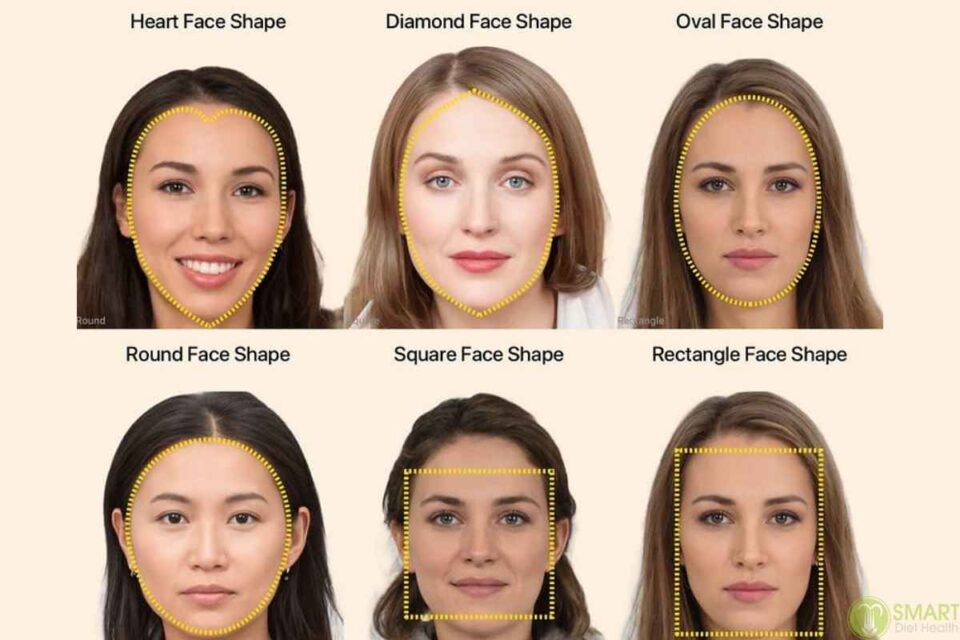Table of Contents
Introduction
If you’ve ever asked yourself, “what face shape do i have?” you’re not alone. Knowing your face shape is more than a timeless beauty curiosity—it’s the key to unlocking personalized style, enhancing your natural features, and making informed decisions about hairstyles, eyewear, makeup, and more. In this comprehensive 2025 guide, you’ll find everything you need to answer the question: what face shape do I have?
Why Does Knowing Your Face Shape Matter?
Understanding “what face shape do I have” empowers you to:
Choose hairstyles and haircuts that flatter your features.
Select eyewear and sunglasses suited for your dimensions.
Apply makeup techniques that enhance your natural beauty.
Find accessories that harmonize with your facial proportions.
Boost self-confidence by embracing your unique appearance.
The 9 Most Common Face Shapes (2025)
To accurately answer “what face shape do I have,” you should become familiar with the principal categories. Though genetics make every face unique, most faces fall into these main shapes:
Face Shape |
Key Features |
| Oval | Balanced proportions; slightly wider forehead than chin; rounded jaw |
| Round | Width ≈ length; full cheeks; soft, curved jawline |
| Square | Forehead, cheekbones, and jawline similar in width; prominent, angular jaw |
| Rectangle | Face length exceeds width; jawline, cheekbones, and forehead nearly equal width |
| Oblong | Similar to rectangle, but edges appear softer; elongated face |
| Heart | Broad forehead, prominent cheekbones, narrow chin; face tapers downward |
| Diamond | Cheekbones widest; narrow forehead and chin; pointed jaw |
| Triangle | Jawline wider than cheekbones; chin is broad or square |
| Pear | Jaw is the widest part; narrow forehead; face appears to widen from top to bottom |
Step-by-Step Guide: How to Determine What Face Shape Do I Have
1. Preparation
Pull hair back: Remove hair from the face for a clear outline.
Find good lighting: Stand in front of a well-lit mirror.
2. Measure Key Facial Points
To pinpoint “what face shape do I have,” use a soft measuring tape or a ruler. Write down your measurements as you go.
- Forehead Width: Measure across the widest part—usually halfway between hairline and eyebrows.
- Cheekbone Width: From your outer eye edge (just below) on one side, across the bridge of the nose, to the same point on the other side.
- Jawline Width: Start under your ear, measure to your chin’s tip. Double it for both sides.
- Face Length: From the peak of your hairline (center of forehead) to bottom of your chin.
3. Compare Your Measurements
Match your notes to these rules:
- Oval: Face length > cheekbones > forehead > jaw.
- Square: All measurements are similar; angular jaw.
- Round: Width and length nearly equal; rounded chin.
- Rectangular/Oblong: Face length notably exceeds width; similar forehead, cheekbone, and jaw widths.
- Heart: Wide forehead, narrow jaw/chin.
- Diamond: Widest at cheekbones, with narrow forehead and chin.
- Triangle: Jawline is wider than cheekbones/forehead.
- Pear: Lower face significantly broader than upper face.
4. Use a Face Shape Detector (Optional)
AI face shape analyzers can help answer “what face shape do I have” instantly—simply upload a photo and receive an analysis. While technology is advancing, manual measurement still offers the most reliable results.
Face Shape Descriptions: Find Out What Face Shape Do I Have
Oval Face Shape
The most versatile shape, known for balanced proportions and gently curved lines. Most hairstyles, makeup looks, and accessories work beautifully.
Round Face Shape
Equal width and length, and soft, curved features. Ideal for adding definition and elongating effects through styling.
Square Face Shape
Strong, broad, and angular—jaw, cheekbones, and forehead all nearly the same width. Looks great with softer hairstyles to balance sharpness.
Rectangle/Oblong Face Shape
Long and lean, with similar jaw, cheekbone, and forehead widths. Hairstyles that add width are flattering.
Heart Face Shape
Broad forehead and cheekbones with a slender chin. Side-swept bangs and softer frames work well here.
Diamond Face Shape
Striking angles with cheekbones as the widest part; a narrow jaw and forehead. Soft layers and volume at the chin are ideal.
Triangle & Pear Face Shape
Jawline is the most prominent feature. Choose styles that add width near the temples and accessories that bring balance to your upper face.
Frequently Asked Questions: what face shape do i have
Q: Can I have more than one face shape?
A: Yes, most people are unique combinations. “What face shape do I have” often leads to a mix—choose the predominant features.
Q: Do glasses, hairstyles, and makeup really depend on my face shape?
A: Absolutely! Selecting frames, haircuts, or makeup methods with your face shape in mind can emphasize your best features and balance proportions.
Q: Are online face shape detectors accurate?
A: They are improving rapidly and great for quick checks, but manual measurement remains the most precise.
Tips for Maximizing Your Look Based on Face Shape
- Oval: Explore a wide range of styles.
- Round: Add angles with hairstyles and frames.
- Square: Soften with rounded styles and layers.
- Rectangle/Oblong: Add width and avoid elongating further.
- Heart: Draw attention to the eyes and cheekbones.
- Diamond: Try chin-length layers to balance cheekbones.
Common Mistakes People Make
Guessing face shape without measuring.
Confusing round and square (jaw shape is key).
Frustration over not fitting a “perfect” category—everyone is unique, and blends are common.
Next Steps: Use What You’ve Learned
Ready to answer “what face shape do I have”? Start with careful measurements, compare your notes to the descriptions above, and—if needed—try out an AI analyzer for backup. This knowledge opens doors to a more confident, curated style and smarter beauty choices.
Embrace your unique features. Discovering “what face shape do I have” isn’t about fitting into a mold—it’s about understanding the blueprint that makes you, you.

